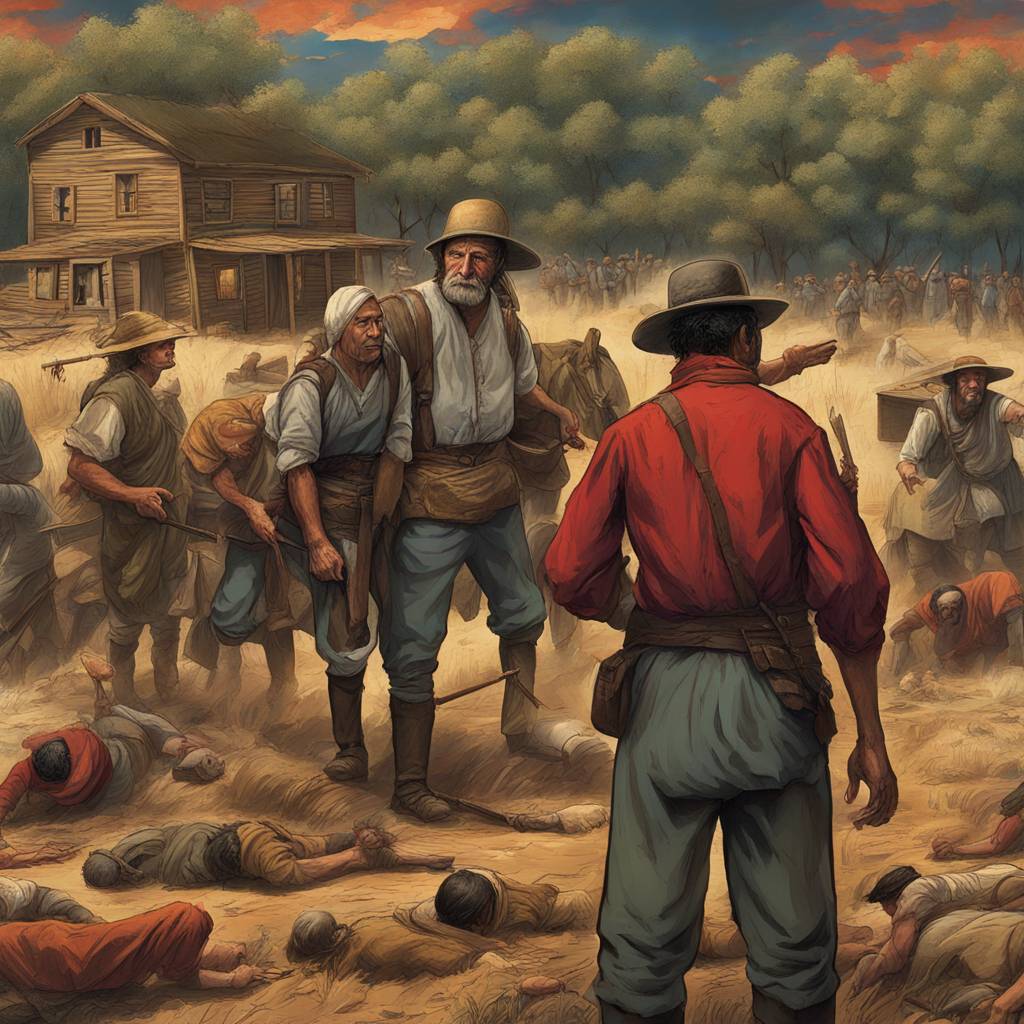The Henty family’s involvement in the illegal squatting and ethnic cleansing of the Gunditjmara people’s land and waterways during colonial times has been largely overlooked in mainstream narratives. The family, led by Edward Henty, illegally settled on Gunditjmara homelands without permission from British authorities, resulting in the theft and destruction of tens of thousands of acres of land. This settlement was a crime against both the British and First Nations peoples, perpetuating a cycle of harm that continues to impact Gunditjmara people and their country.
Edward Henty’s arrival in the area, marked by his symbolic colonial ritual of ploughing the land, mirrors the actions of other colonial figures like James Cook in enacting an invasion based on the false doctrine of terra nullius. This event signifies the beginning of the ongoing dispossession and marginalization of the Gunditjmara people at the hands of the Henty family, the state of Victoria, and the broader settler colony of Australia. The harm inflicted upon the Gunditjmara people through land theft and memorialization of colonial figures remains a pressing issue.
A recent audit of monuments in the Glenelg Shire Council, where the Henty family’s presence is notable, reveals that a majority of the local monuments are dedicated to the Hentys, explorer Major Thomas Mitchell, and early whaler William Dutton. Only two monuments in the area recognize Aboriginal people, including one dedicated to Reginald Saunders, Australia’s first Aboriginal military officer, and the Gunditjmara Tribe Memorial. Calls have been made to relocate or destroy monuments dedicated to colonial figures like the Hentys in order to acknowledge the realities of settler colonialism.
There is a growing movement to challenge the glorification of colonial figures and acknowledge the harmful legacies of colonization on First Nations peoples. Some believe that preserving monuments to colonizers like the Henty family perpetuates a fantasy and erases the true history of dispossession and violence against Indigenous peoples. Suggestions to relocate or destroy these monuments and place their fate in the hands of Indigenous communities reflect a shift towards decolonizing public spaces and creating a more inclusive and accurate representation of history.
The story of the Henty family’s role in the displacement and harm of the Gunditjmara people highlights the need for a more honest and inclusive understanding of Australia’s history. By confronting and dismantling narratives that glorify colonial figures, there is an opportunity to reckon with the injustices of the past and work towards reconciliation with First Nations peoples. This ongoing dialogue about memorials, monuments, and public spaces is part of a broader movement towards acknowledging and redressing the impacts of settler colonialism on Indigenous communities in Australia.













